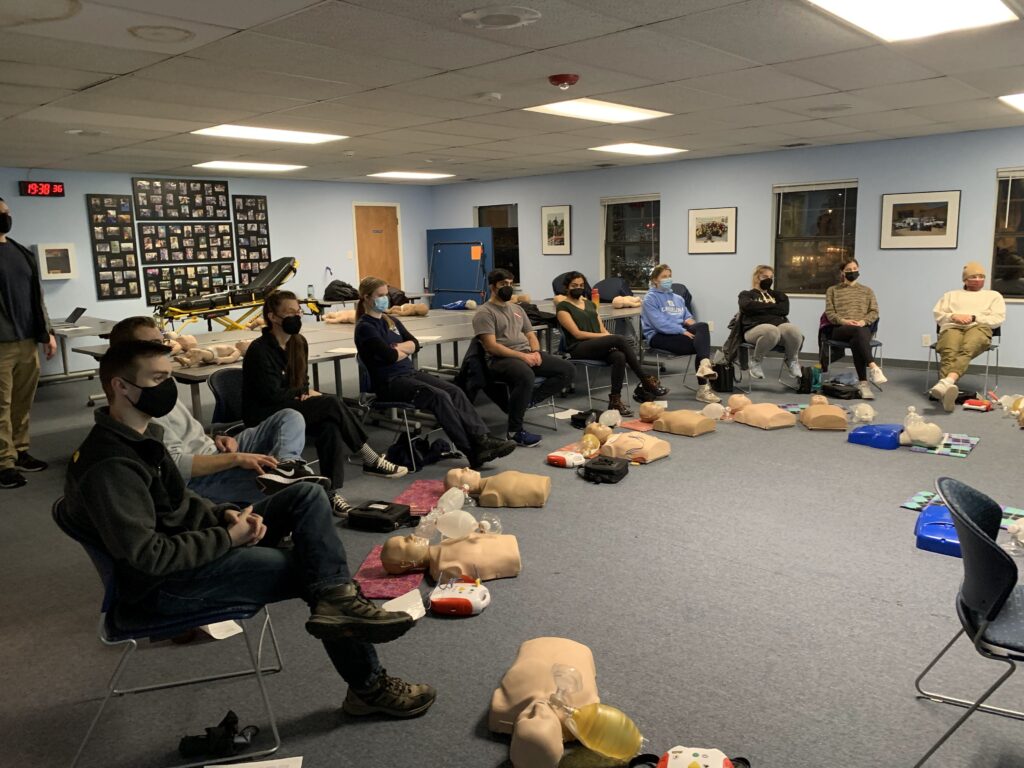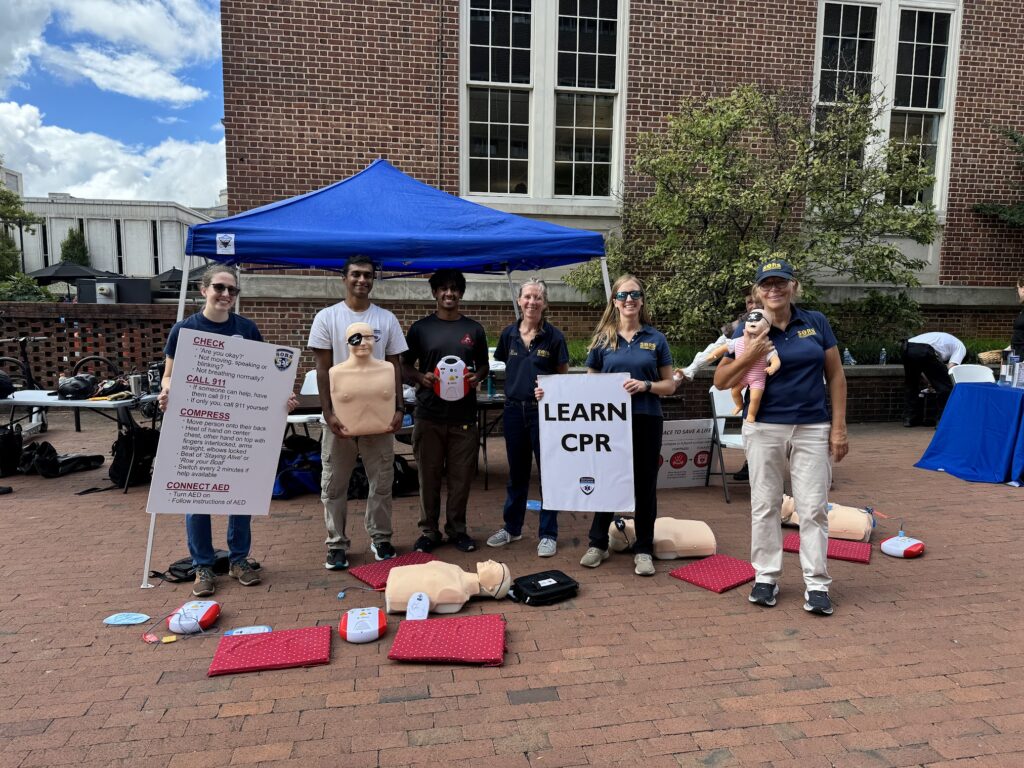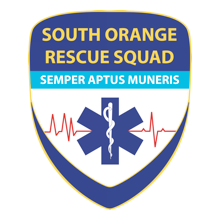Be a CPR Superhero!
By Caroline Williams, CPR & Community Education Lead
Did you know that you can help save a life? Just about anyone can learn how to do CPR and you never know when you’ll need it to help a friend or loved one in an emergency.
Bystanders who give chest compressions to someone in cardiac arrest (when their heart stops pumping blood) can double that person’s chances of surviving, according to multiple studies.
This is important when you realize that every year, more than 350,000 people go into cardiac arrest in their communities. Around 75% happen at home, and 90% are fatal.
The first few minutes – before professional help like SORS and our colleagues in emergency response can arrive – are crucial. And you can make a huge difference.
Knowing how to recognize a medical emergency and how to give CPR or use an AED (automatic external defibrillator) are crucial skills. People who get CPR from a bystander are more likely to respond when the AED or EMS arrives – and to survive than those who don’t receive it. In our area, less than 50% of people who go into cardiac arrest in the community receive CPR from a bystander, and less than 50% of them have an AED used on them. We want to change that!
That’s why we offer free classes for the public every month and work with local families, civic groups and employers to provide free trainings, too. Join us and learn to be a CPR superhero!
Email cpr@sors.us with questions or to arrange for a private class!

Come to our station in downtown Carrboro for a free class. Photo: SORS Member Alina Joseph
Know the 4 Cs
- Check the scene for safety and to see if the person is responsive and breathing normally (if not, they need CPR right away!)
- Call 911 and send someone to look for an AED (the dispatcher can remind you what to do!)
- Compress hard and fast on the center of the chest at 100-120 pushes per minute
- Connect the AED’s pads to the person’s bare chest and follow its prompts
CPR has evolved
If you’re of a certain age, you were probably trained that CPR included two tasks: breaths and compressions. This was the standard back then – and is still what professionals do. But for you – a layperson who just wants to help someone – hands-only CPR is recommended to protect the heart and brain of adults and teens until EMTs arrive. With hands-only, you don’t need to do mouth-to-mouth resuscitation. You just need to press hard and fast on the center of the chest.
And now that AEDs are in most public and commercial buildings, knowing how to use one is just as important as delivering compressions. Just turn it on and follow the verbal prompts. Don’t feel OK about that? You can still be a superhero! Keep your eyes peeled for AEDs when you’re out and about so you know where to find them. Fetching the AED is a really important job!
Allison De Marco worked with SORS to organize a CPR and a First Aid class for her community.
“The hands-on work with the AEDs was engaging and really important. Because of these classes, we’ve been working to have AEDs more available in our communities and workplaces and even worked with Orange County Social Services to apply for a grant for AEDS for two of our key homeless service organizations.”

Learning to use an AED is an easy way to be a CPR Superhero! Photo: SORS Member Margot Lester
CPR for adults and teenagers
- Make sure that the person is lying on his or her back on a firm flat surface (not on a bed)
- Kneel next to the person’s chest
- Put the heel of one of your hands in the center of their chest (on the bottom half of the breast bone) and your other hand on top of it
- Lean forward over the person so that your shoulders are right over your hands
- Lock your elbows
- Bend at your hips and press down hard and fast (at least two inches down) 100 to 120 times per minute or until an AED or EMT arrives (you can press to the beat of “Staying Alive” or “Baby Shark” to help you keep the beat)
- Let the chest return to its normal position after each compression
CPR for kids and babies
Giving CPR to young kids and infants has a few more steps!
Compressions for a child:
- Make sure that the child is lying on their back on a firm flat surface (not a bed)
- Kneel next to their side
- Put the heel of your hand in the center of their chest (on the bottom half of the breast bone) and your other hand on top of it (For small children, you might only need to use one hand)
- Lean forward over the person so your shoulders are directly over your hands
- Lock your elbows
- Bend at the hips and press down hard and fast (two inches down) 30 times at a rate of 100 to 120 per minute
- Let the chest return to its normal position after each compression
Compressions for a baby:
- Move the baby to a firm flat surface. Wrap your hands around the baby’s chest so that your fingers are behind and thumbs in front. Put both of your thumbs next to each other in the center of the baby’s chest just at the nipple line.
- Push both thumbs down hard enough to compress the bottom half of the breast bone 1.5 inches at a rate of 100 to 120 times per minute
- Allow the chest to return to its normal position after each compression
Breaths for children and babies:
- Open their airway by tipping the head back slightly to a neutral position
- Pinch the nose closed, put your mouth around their mouth (or mouth and nose if very small) and blow into their mouth with a puff for about 1 second, making sure the chest rises (this shows the air is getting in. If it doesn’t, retilt the head before giving another attempt)
- Let the air go out before giving a second breath
- Resume compressions in sets of 30 compressions followed by 2 breaths

SORS volunteers teach the 4 Cs at festivals and public events that UNC’s Tarrr Heel Preparedness Day. Photo: SORS Member Gabi Battaglini
Learning CPR empowers you to help your family and friends in an emergency and to assist others in the community when they need it most. Join us for a class or donate to help us continue to offer instruction free of charge.
 The South Orange Dispatch is a monthly column on Chapelboro by the South Orange Rescue Squad: an all volunteer, 501c3 non-profit providing EMS and technical rescue services in the Carrboro-Chapel Hill area of Orange County since 1971.
The South Orange Dispatch is a monthly column on Chapelboro by the South Orange Rescue Squad: an all volunteer, 501c3 non-profit providing EMS and technical rescue services in the Carrboro-Chapel Hill area of Orange County since 1971.

